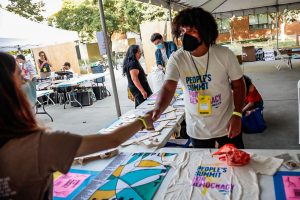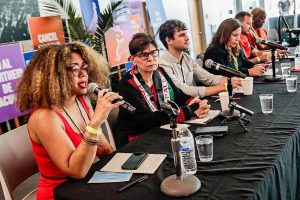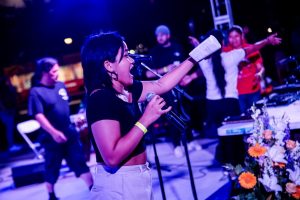The People’s Summit for Democracy began in Los Angeles on Wednesday, June 8. However, it is much more than just an alternative to the Biden administration’s and the Organization of American States’ Summit of the Americas.
The Summit of the Americas has historically been a place for the United States, which plays a central role in the OAS and which continues to exploit the Americas for resources and markets, to present its own agenda for the region.
But this year, beginning with Mexican President Andrés Manuel López Obrador, many Latin American leaders across the continent decided to boycott the summit entirely. The boycott was a protest against the exclusion of the Latin American nations that the United States is most hostile towards: Nicaragua, Venezuela, and Cuba. Although this is not the first time certain countries have been excluded from the summit, it is the first time those exclusions have been met with such a strong response.
This poses a distinct challenge to the organizers of the People’s Summit: how to organize a counter summit, when the original summit is a failure?
Luckily for the People’s Summit, the organizers set out with creativity and optimism to create far more than an alternative summit. Instead, the People’s Summit is something entirely new.
Volunteers from convening organizations such as the ANSWER Coalition and The Peoples Forum arrived in Los Angeles from across the country with one purpose: to build a successful People’s Summit. As soon as the Los Angeles Trade Technical College’s graduation ended at 9 pm on the night of June 7, volunteers set about unloading materials for the next day’s summit. Teams carried cinder blocks and wooden planks, while others passed down bins of material in an assembly line. They were told to expect to stay until midnight or later, but finished an hour earlier, sent off with chants of “high discipline, high morale!”

At six in the morning the next day, these same activists were back on campus to build the summit in time for the opening ceremony at 11 am. By opening time, trash and chairs were picked off of the graduation ceremony field, an art exhibition was constructed, a vendor’s tent was set up, rooms were equipped, and a hall was prepared to seat hundreds of guests.

The opening ceremony began with a mística, or a ritual of collective reading that is popular in Latin America. A poem was read by three activists, in three different languages: Portuguese, Spanish, and English. The last line read: “Hope has the name of liberation.”
The Summit of the Americas’ failure was brought up many times throughout the day. Palestinian scholar Dr. Rabab Abdulhadi said during a panel on solidarity, “People struggling for their right to self determination, for the right to their freedom, for the right justice, for the right of peace, and for their children and so on, don’t really care much about what the United States, or what Biden or this failed Summit that he’s going to be holding with many no-shows, is thinking. ” She added, “The United States has no place to actually teach anybody around the world about democracy, about human rights.”
Capitalism and imperialism are the common enemies of the global working class, and the people of the Americas must develop internationalism to defend against their shared oppressor, says Claudia De La Cruz of @peoplesforumnyc. @Peoplessummit22 pic.twitter.com/5YHYpNFiPb
— BreakThrough News (@BTnewsroom) June 9, 2022
But equally present was the idea that the central mission was to build something different, something new. People’s Summit organizer and activist Claudia de la Cruz, said of the US during that same panel on solidarity, “They are responsible for spreading war and misery. And we must be responsible to defend our people from that misery and that war. We must take on the responsibility to uplift, promote, and defend life. Because capitalism and imperialism are extraction, and their proposal has been, and will always continue to be, death.”

“We all agree, I think, that another world is possible. But we have to make it so.” said Dr. Abhulhadi.
The stark differences between both summits could not have been clearer for Mara Luna, a consultant from Argentina who specializes in forced migration. Luna had attended the Summit of the Americas, but left to come to the People’s Summit.
Luna told Peoples Dispatch, speaking of the OAS’ exclusion of Venezuela, Nicaragua, and Cuba, “By excluding those governments, Biden or the administration is excluding the people that live inside of those countries. So how can we find solutions for transnational issues such as forced migration, climate change? All of these topics that are being discussed at the summit are of a transnational nature, they are not national. They are not within national borders. We all share them, which means that we need to share this solution. We cannot find solutions if three countries are excluded.”

“Here [at the People’s Summit] is where we can have the real conversations that are going to move the needle,” she continued. “And this is why the people’s summit is so important, because these are discussions that we need to have if we want real social change.”





